One anesthesiologist’s use of iPhone, iPad & iPod Touch Technology
By Dan Low, MD and Sean Flack, MD
Seattle Children’s Hospital, University of Washington
Conflict of Interest Statement:
Dr. Daniel Low is the medical director of iMobileMedic.com Ltd, the company that developed iGasLog, iResus, iNAP3 and iDAS. Dr. Low does not receive any payment or derive any financial benefit from any of these apps. He also used his eldest son for the photograph of a simulated iPhone induction.
Dr. Sean Flack owns an iPhone and knows how to use his Macbook.
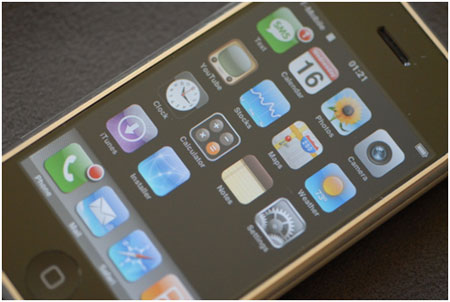
0600: Alarm goes off on iPhone, reminder it’s Monday morning and 0630 staff meeting in 30 minutes – it’s synced to events on my work Outlook calendar.
0615: Arrive at the hospital, park and walk into Starbucks, they know my routine and my drink, I pay for it using the iPhone Starbuck’s App – Lucky day. It’s my 15th drink, so it’s free today!
0618: Unusually, I’m early for the meeting, so I change into scrubs and make my way down the elevator, checking email on the way. There’s been a last minute add-on to the morning operating schedule, I have the patient details, so I log onto Citrix, check lab results and read the most recent progress note.
0625: Meeting room is getting full, speaker is figuring out how to turn the projector on. Reminder text message from home, kid's dentist appointment after school, my wife is gently reminding me that I’m low on the schedule and if I can get out on time it would be helpful if I met them at the dentist to help with childcare! (She has an iPhone 3GS with “cloud”-synchronised calendars so she can see my schedule.)
0630: Speaker starts presenting a case… Child with glycogen storage disease, type 2. I quickly google that one – thank goodness for emedicine, also I’m grateful I upgraded to iOS4.3 last night, Safari is lightening fast over the hospital WiFi. There are a couple of papers referenced at the end – I store them on the Papers App – essentially a repository of papers I’m interested in. I have Papers on my iPhone, iPad and Desktop (all synchronised to each other). Papers is linked to the University’s Library via a proxy server, so its like being in the library with access to almost any journal I can name.
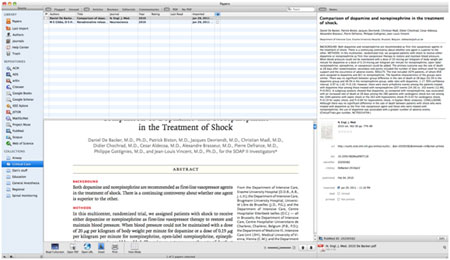
Screen shot from Papers (desktop version)
0730: First case is a nervous 6 year old having minor ENT surgery, would be a real shame to have to give midazolam premedication just to get him into the OR. Fortunately, I have a selection of gender and age specific movies loaded on my iPhone for this very reason. I offer him “Cars," which happens to be his favorite movie. I explain we’ll be doing an “iPhone induction” of anesthesia – he seems very impressed and it all goes without a hitch. [1]
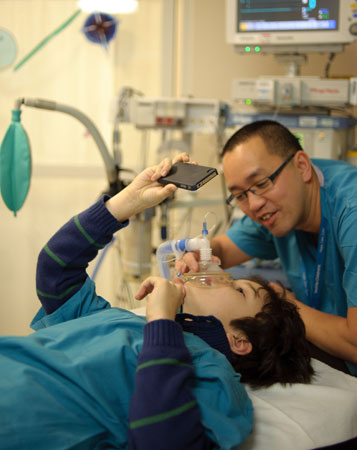
A simulated “iPhone Induction”
0815: Time to start my second OR. First case is going well, 20 minutes left. I want to be able to keep an eye on the monitors remotely to maintain my situational awareness. So I use my iPod Touch, mounted on a Gorillapod, wrapped around an IV pole. I turn on FaceTime, and point the camera at the monitor, I link the real-time image to my iPhone, do a quick sound check, brief the resident and leave. I now have real time video and sound from this room in my pocket as well as two-way communication with my resident. [2]
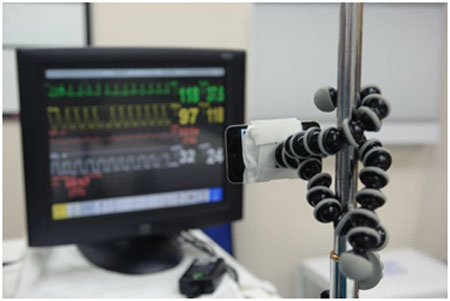
iPod Touch and gorillapod pointing at monitor
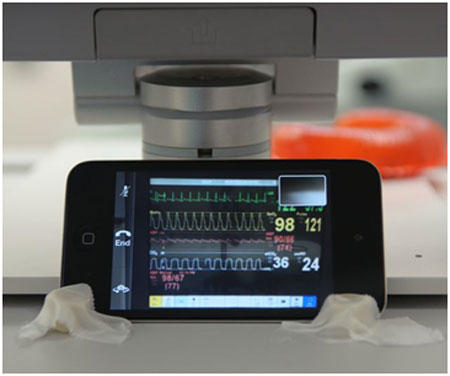
iPhone with FaceTime feed from iPod Touch
10:15 MRI case – 5 year old having an MRI of his knee, listed as a candidate for sedation. He seems very sensible and we have a very expensive MRI proof TV with some DVDs in there. I suggest he try this in the first instance, he chooses Sponge Bob as his entertainment of choice.
10:20 Unfortunately MRI proof TV is not working… it’s not known for its reliability. Child is already in scanner, eagerly awaiting appearance of Sponge Bob. I turn on my iPad in the control room, hook up the VGA adaptor to the projector we use for functional MRI scans, hook up the audio feed from the iPad to the headphones. Jump onto the hospital WiFi, connect to my Netflix account. Now I’m streaming Sponge Bob from the control room into the MRI scanner! One GA avoided.
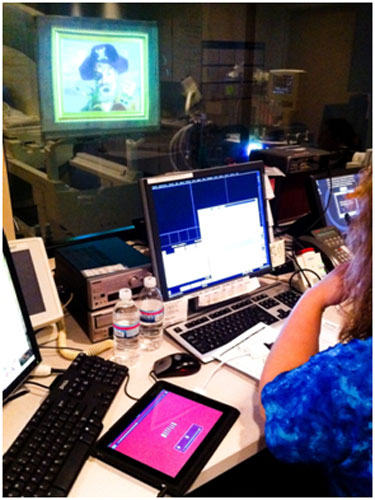
iPad, Netflix App, connected to projector and headphones
11:30 2 year old, emergency add-on from PICU. I brief with the fellow before heading back to the OR. We run through various scenarios and contingency plans. We prepare drugs and equipment and review resuscitation algorithms on iResus app.
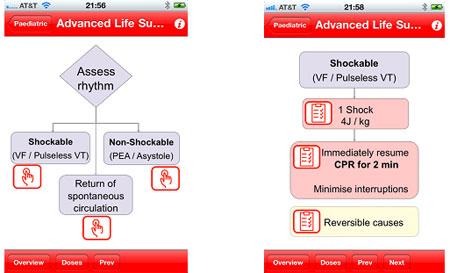
iResus App – Contains guidance from the Resuscitation Council (UK)
12:30 Case underway, patient doing very well. Plan is to extubate awake at end of procedure in about an hour. Switching to Desflurane. Fellow asks how I remember age specific MAC values for all the volatiles. I show him the MACage app.
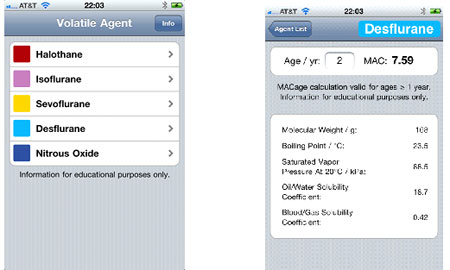
MACage app – Calculates age-specific MAC from Mapleson’s formula
14:00 PICU and patient safely extubated and returned to unit. Next case requires sciatic nerve block. Resident asks for a refresher before performing block. I pull up the Sonoaccess app which streams a video from YouTube demonstrating correct anatomy, positioning, technique and ultrasound images.
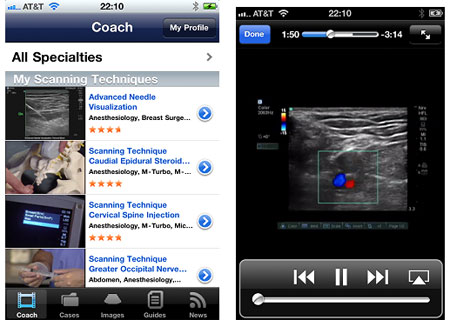
SonoAccess App – streams short teaching videos from YouTube server
15:00 Day is wrapping up nicely. I log all my cases on iGasLog, its appraisal next week, so I compile an activity report for the last 12 months and email it as a PDF to my division lead so they have it in good time before our meeting.
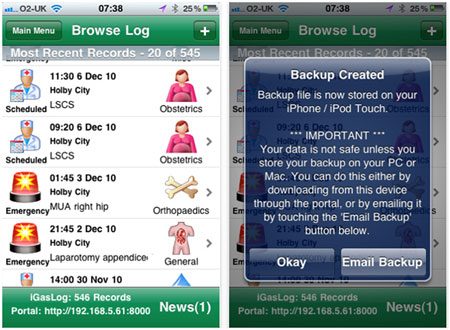
iGasLog – point of care case logging, backups and report generation
1510: Called into the pre-operative assessment clinic by one of our nurse practioners who thinks a patient has abnormal heart sounds. I pull out my iPhone, clean it with an alcohol wipe (in the same way I’d clean my stethoscope), fire up iStethoscope Pro. I place the microphone on the phone against the patient’s chest, sure enough there is a split S2 heart sound. I’m not sure if it’s a fixed split, so I make a recording on the app (which sounds almost as good as if I were listening with my $250 cardiology stethoscope). I email the sound file with a note to a cardiology colleague of mine asking for a consult.
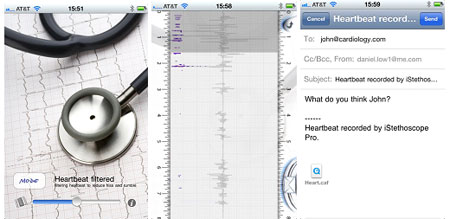
iStethoscope Pro App – uses the internal microphone and filters ambient sound.
1525: Whilst in pre-op assessment, I’m asked to step into another room for a consult. There is a patient scheduled for surgery in two weeks, who may benefit from an epidural. The patient and parents are very well informed, and would like a discussion about potential risks. Just before entering the room, I pull out iNAP3 app, which contains the summary data from the UK’s Royal College of Anaesthetists year long study which captured the risks of central neural-axial blockade.
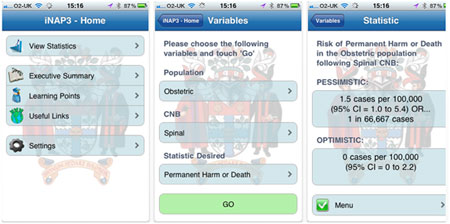
iNAP3 app – commissioned by the Royal College of Anaesthetists (UK)
quantifies risks of central neural-axial blockade.
15:40 As I head out, I open my email in the elevator, check tomorrow's schedule – already in my inbox as a PDF.
References:
- The 'iPhone' induction - a novel use for the Apple iPhone. Paediatric Anesthesia. 2008 vol. 18 (6) pp. 573-4
- A novel use for the Apple (4th generation) iPod Touch in the operating room. Anaesthesia. 2010 vol. 66 (1) pp. 61-2
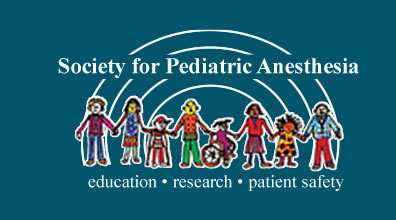

 Click
Click